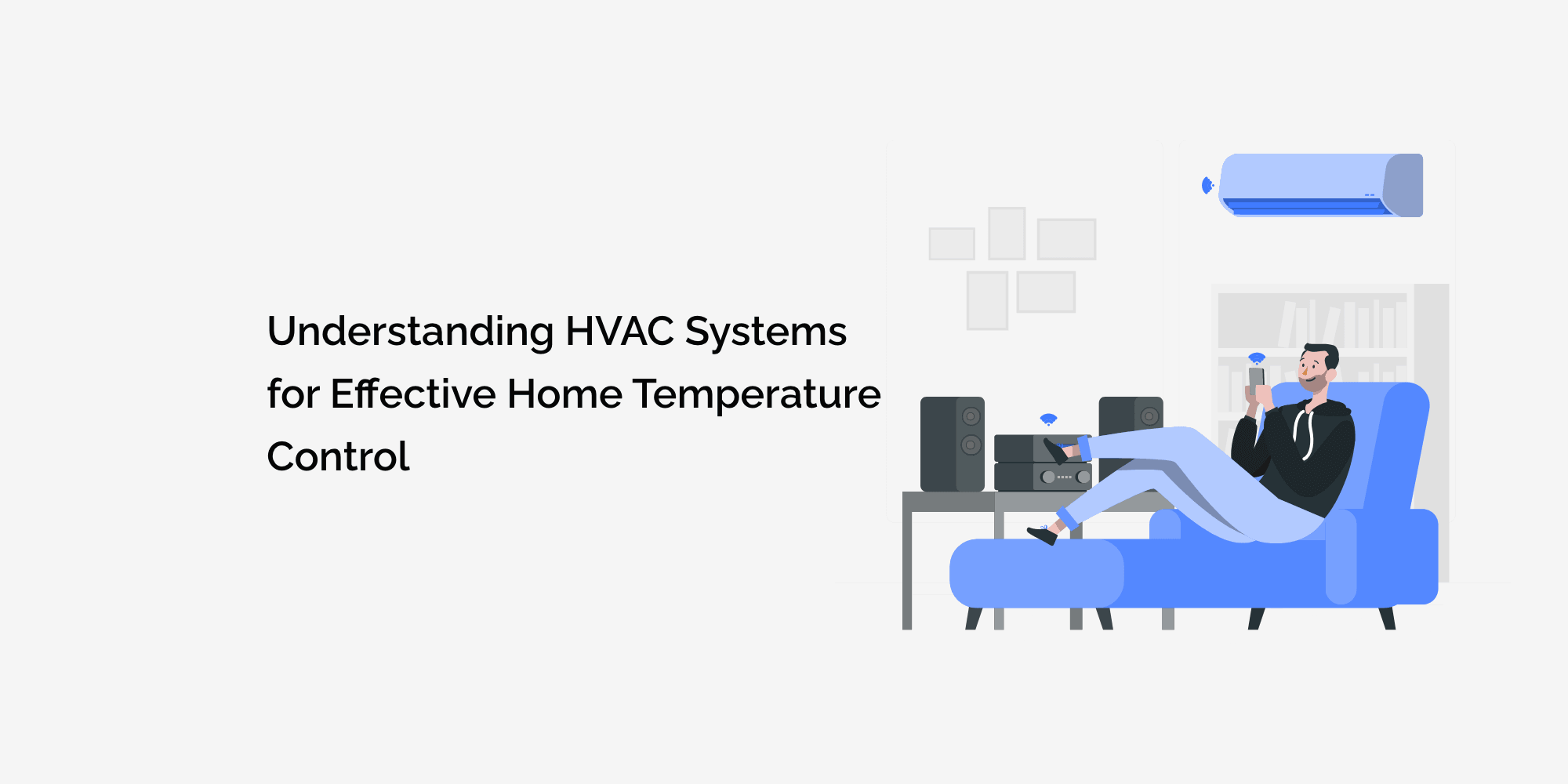In modern homes, Heating, Ventilation, and Air Conditioning (HVAC) systems play a crucial role in maintaining a comfortable indoor environment throughout the year. These systems not only regulate the temperature but also ensure proper ventilation and air quality.
Understanding how HVAC systems work and how to optimize their performance is essential for effective home temperature control and energy efficiency.
In this comprehensive blog, we will delve into the various components of HVAC systems, their operation, maintenance, and tips to achieve optimal temperature control in your home.
The Components of an HVAC System
Heating Systems
Furnaces:
Gas, electric, or oil-powered furnaces are common heating systems in homes. They work by generating heat and distributing it through ducts or pipes to various rooms.
Heat Pumps:
Heat pumps are versatile heating and cooling systems that use refrigeration principles to transfer heat between indoor and outdoor environments. In heating mode, they extract heat from the outdoor air or ground and transfer it indoors.
Cooling Systems
Air Conditioners:
Air conditioning units cool indoor air by removing heat and moisture from the air. They use a refrigerant to absorb heat and then release it outside, circulating cool air back into the room.
Ductless Mini-Split Systems:
These systems consist of an outdoor compressor unit connected to one or more indoor air handlers. They offer zone-based cooling, allowing for individual temperature control in different areas of the house.
How HVAC Systems Work
Heating Cycle
- For furnaces, the thermostat detects the indoor temperature and signals the furnace to ignite and heat the air.
- The heated air is then distributed through ductwork and registers into different rooms.
- Once the desired temperature is reached, the thermostat signals the furnace to stop.
Cooling Cycle
- In air conditioners and heat pumps, the thermostat detects the indoor temperature and signals the cooling unit to start.
- The refrigerant absorbs heat from the indoor air, transforming from a liquid to a gas.
- The heated refrigerant is pumped to the outdoor unit, where it releases heat and condenses back into a liquid.
- The cooled refrigerant is then pumped back indoors to repeat the cycle.
Optimizing HVAC Performance for Efficient Temperature Control
Proper Insulation
Insulating your home effectively helps retain heated or cooled air, reducing the workload on your HVAC system. Inspect and improve insulation in walls, attics, and windows to prevent energy losses.
Programmable Thermostats
Installing programmable thermostats allows you to set different temperature schedules based on your daily routines. This can help you avoid unnecessary heating or cooling when you are away from home, leading to energy savings.
Regular Maintenance
Scheduled maintenance of your HVAC system ensures optimal performance and extends its lifespan. Regularly clean or replace air filters, inspect ductwork, and check for any malfunctions to prevent potential breakdowns and inefficiencies.
Zoning Systems
Consider implementing zoning systems with dampers in your HVAC system. Zoning allows you to control temperatures independently in different areas of the house, directing conditioned air where it is needed most.
Energy Efficiency and Sustainability
High-Efficiency HVAC Systems
Upgrading to energy-efficient HVAC systems, such as Energy Star-rated units, can significantly reduce energy consumption and lower utility bills.
Geothermal Heating and Cooling
Geothermal systems use the earth's natural heat to provide heating in the winter and cooling in the summer. While the initial investment can be high, geothermal systems are highly efficient and environmentally friendly.
Common HVAC Issues and Troubleshooting
Uneven Cooling or Heating
Learn how to balance airflow and troubleshoot issues related to uneven temperature distribution in different rooms.
Short Cycling
Understand the causes and remedies for short cycling, a phenomenon where the HVAC system frequently turns on and off, wasting energy.
Leaking Ductwork
Detecting and repairing leaks in ductwork is essential for preventing air loss and ensuring efficient temperature control.
Upcoming HVAC Technologies and Trends
Smart HVAC Systems
Explore the potential of AI-driven smart HVAC systems, which can learn from user preferences and optimize performance automatically.
Eco-Friendly Refrigerants
Learn about the transition from traditional refrigerants to more environmentally friendly options, such as hydrofluoroolefins (HFOs).
Conclusion
A comprehensive understanding of HVAC systems is essential for achieving effective home temperature control while optimizing energy efficiency and sustainability. By knowing how the various components work together, performing regular maintenance, and implementing energy-saving strategies, homeowners can create a comfortable living environment while minimizing their carbon footprint and reducing utility costs.
Embracing emerging HVAC technologies will lead us towards a greener and more intelligent future, where homes are not only comfortable but also environmentally responsible.








